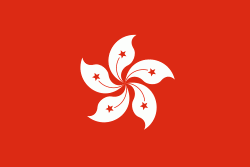Tai Po District (Tai Po District)
 |
Like Yuen Long, the area of Tai Po used to be a traditional market town. Tai Po New Town, a satellite town, developed around the area of Tai Po and on reclaimed land on the estuaries of Lam Tsuen and Tai Po rivers. It had a population of 310,879 in 2001. The district has the third lowest population density in Hong Kong.
The district is named after Tai Po. Tai Po's population dates back to the eleventh century, people would make sufficient money by clamming, pearl harvesting and fishing. In Yuen Chau Tsai, stone axe and pottery have been discovered which were believed to be made in Neolithic era.
Tai Po was the seat of the district officers that oversaw the whole of the New Territories with Island House as their official residence. The Island House was completed in 1906, 8 years after the Convention for the Extension of Hong Kong Territory. The New Territories was later split into the District North and South (Not to be confused with modern-day Northern District and Southern District of Hong Kong), as well as New Kowloon in 1937. Tai Po remained as the headquarters of the District North after the split. The old headquarters of the District is a declared monument currently. The District North and then further shrunk, which Sha Tin District, Yuen Long District (includes modern day Tuen Mun) and the modern day Northern District were split from the District North and District North was renamed Tai Po District, which oversaw Tai Po and nearby Lam Tsuen Valley, as well as an exclave on the northern part of the Sai Kung Peninsula. The seats of the Tai Po District branch of the Home Affairs Department as well as the Tai Po District Officer, is currently located in another government building, Tai Po Government Offices Building, in Ting Kok Road, in the northern shore of Lam Tsuen River.
The Tai Po District Council was formed as the Tai Po District Board in the 1980s, with elections held since that decade.
Map - Tai Po District (Tai Po District)
Map
Country - Hk
 |
 |
Hong Kong was established as a colony of the British Empire after the Qing Empire ceded Hong Kong Island from Xin'an County at the end of the First Opium War in 1841 then again in 1842. The colony expanded to the Kowloon Peninsula in 1860 after the Second Opium War and was further extended when Britain obtained a 99-year lease of the New Territories in 1898. British Hong Kong was occupied by Imperial Japan from 1941 to 1945 during World War II; British administration resumed after the surrender of Japan. The whole territory was transferred to China in 1997. As one of China's two special administrative regions (the other being Macau), Hong Kong maintains separate governing and economic systems from that of mainland China under the principle of "one country, two systems".
Currency / Language
| ISO | Currency | Symbol | Significant figures |
|---|---|---|---|
| HKD | Hong Kong dollar | $ | 2 |
| ISO | Language |
|---|---|
| ZH | Chinese language |
| EN | English language |















